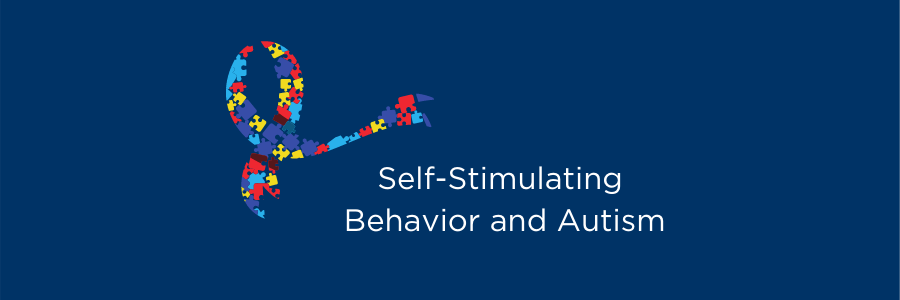Self-Stimulating Behavior and Autism

Back to physical health resource hub
Self-stimulatory behavior, or “stimming,” is defined as, “repetitive body movements or repetitive movements of objects” (Center for Autism Research). Anyone may engage in stimming, including neurotypical individuals and people on the Autism spectrum. Some people may stim in a way that isn’t noticeable, such as tapping their leg or chewing on their pencil. Other times, stimming may be harmful to an individual or disruptive to a quiet environment. As parents, professionals, and caregivers it is important to understand the function of stimming and why it occurs as well as ways to replace self-stimulatory behavior when it is harmful or prevents someone from participating in meaningful activities.
Individuals with autism report that stimming is a way to adapt to an environment or to counteract overwhelming sensory information. Stimming may serve to calm, alert, or maintain attention for any given person. Sometimes, self-stimulatory behavior can prevent someone from participating in more meaningful activities, or can be harmful to the individual or others. In this case, the behavior may cause a problem and parents often wonder what they can do to stop the behavior. Instead of attempting to stop stimming, experts report that it is more helpful to try to replace the behavior with something more appropriate.
Experts report that punishment is not an appropriate way to reduce stimming (Center for Autism Research). To effectively replace self-stimulatory behavior, we first have to understand the function of the behavior. Stimming may function to gain sensory input, to counteract anxiety, or to reduce overwhelming sensory input. Managing stimming can be a difficult task, but there are several techniques appropriate to introduce a modification or replacement for the self-stimulatory behavior, and to treat the underlying causes of stimming. Parents and caregivers may consider occupational therapy to address sensory processing, behavioral therapy (Applied Behavior Analysis, “ABA”), medications, or changing the environment or aspect of the environment. It is possible to replace or reduce stimming that is dangerous or disturbing by changing the stim or introducing and teaching a “safe” place to stim. Parents and caregivers should consider joining an autism support group to gain support and ideas for ways to best serve their autistic child and accept self-stimulatory behaviors.
Brooks Rehabilitation has 10 outpatient clinics across north Florida that offer pediatric physical, occupational, and speech therapy to help children with autism participate in and gain independence in desired activities. If you are concerned with your child’s development or self-stimulatory behaviors, please speak with your child’s doctor. If you feel your child would benefit from a physical, occupational, or speech therapy evaluation, ask your doctor about a referral. The Brooks Outpatient Pediatric Program also offers free developmental screenings at all 10 locations for children ages 1 month-5.5 years old.
Sources:
- Rudy, L. (2019, November 28). Understanding why your autistic CHILD ROCKS, flaps, and Paces. Retrieved March 22, 2021, from https://www.verywellhealth.com/what-is-stimming-in-autism-260034
- Stimming: What is it and does it matter? (2020, May 29). Retrieved March 22, 2021, from https://www.carautismroadmap.org/stimming-what-is-it-and-does-it-matter


